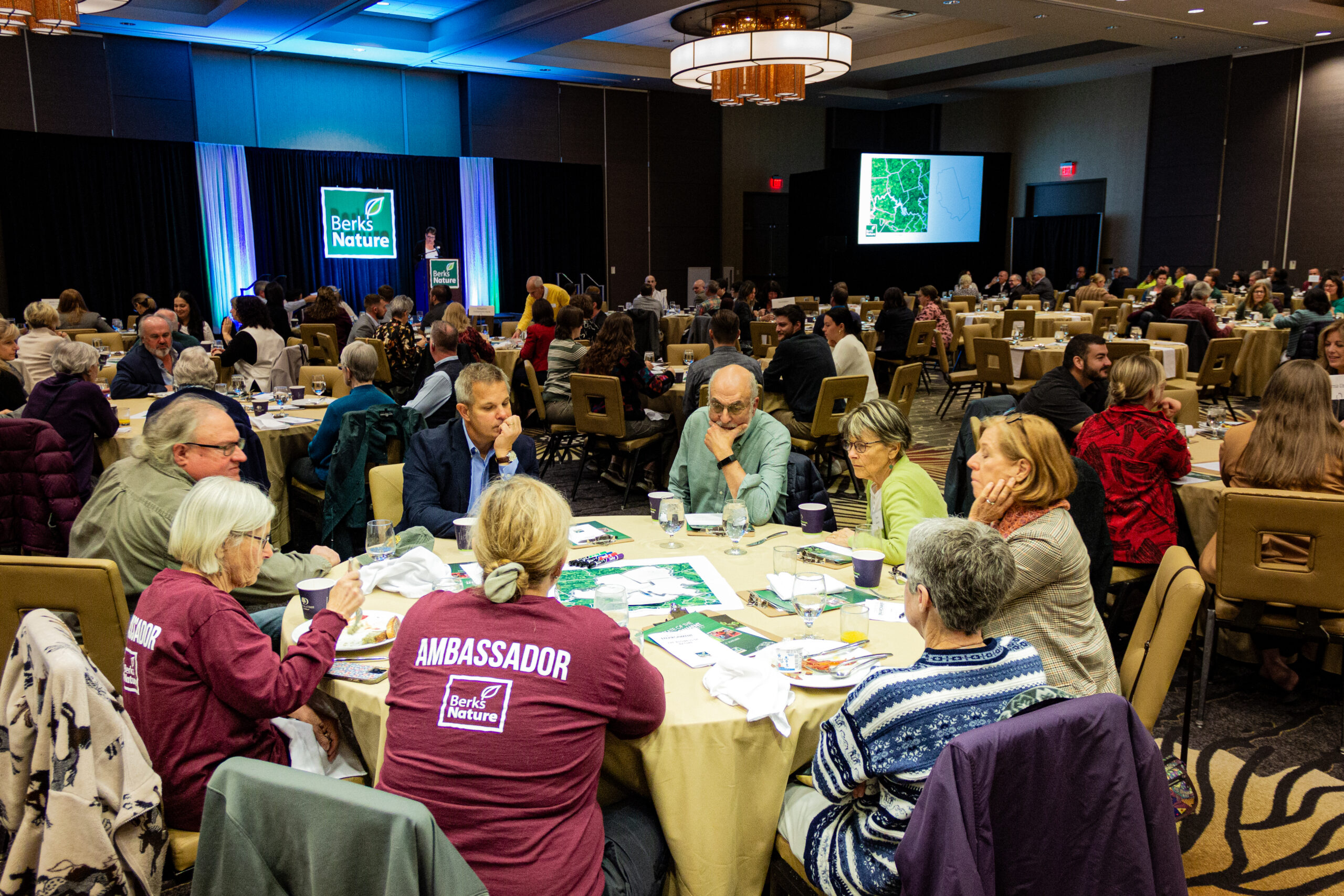What is nature worth?
If we knew, how would this change the way we, as a community, make decisions about our housing, our infrastructure, and our resources?
For over 300 years, rolling farmlands, lush river basins, and rugged forested ridgelines have been the backdrop for our heritage, culture, and economy in Berks County. Twenty-four hours a day, 365 days a year, these natural spaces filter our water and clean our air while providing to our local economy in healthcare savings, property value premiums, and revenue from outdoor recreation.
All too often, natural community assets such as these are taken for granted because of their on-going, reliable, but understated services. Now thanks to a new report produced by Greener Planning in partnership with the PA Department of Conservation and Natural Resources and Audubon Mid-Atlantic, the 2023 Berks County Return on the Environment, our community and land-use decision makers have the data and tools to not only recognize the benefits of our natural environment, but also to address the challenges and opportunities of protecting and optimizing these services.
The Return on Environment report, and its complementary suite of online planning tools, took center stage at Berks Nature’s 16th Annual State of the Environment Breakfast held on Thursday, November 14, 2024.
With nearly 300 in attendance, representing local academic institutions, municipal decision-makers, and concerned citizens, Kim Murphy, President of Berks Nature, shared the biggest takeaways from the Return on Environment report:

Kim Murphy, President of Berks Nature
- $853 million is the annual cost savings benefit provided by nature in Berks County.
- $134 million is saved each year in the way of reduced healthcare costs.
- $938 million in revenue is generated through outdoor recreation and fishing in Berks alone is a roughly $63 million business. Without clean streams and cool, healthy waterways, this portion of our economy would cease to be.
- $128 million is saved each year thanks to healthy rivers (and their surrounding woodlands), which purify water and mitigate flooding.
So, we know what nature’s worth… How now do we put these findings to work?
It starts with the decisions we make about our land in our community planning.
In the second part of the State of the Environment Breakfast program, attendees received a quick lesson on local land-use planning; from ordinances and municipal planning codes to the “who’s who” of these development decisions.

Dave Hunter, Executive Director of the Berks County Planning Commission.
David Hunter, Executive Director of the Berks County Planning Commission, added his voice to this presentation, shedding light on the inner values, operations, and missions of the planning commission through his Five C’s of community planning: Connection, Collaboration, Cooperation, Coordination, and Communication.
The timing of this work and these presentations is fortuitous, as in 2025 the Berks County Planning Commission will be embarking on their next iteration of the Berks County Comprehensive Plan: the primary guide for communicating the goals and objectives of Berks County.
But the highlight of the morning was a zoning simulation that put the event’s attendees in the driver’s seat of their own municipal land-use planning! At each table, people worked in pairs to map the zoning of a single municipality. They were charged with including just 4 types of zones: residential, commercial, agricultural, and industrial.
Using colored markers to code each zone, each pair drew out their plan on a laminated cut-out in the shape of a local municipality.
The room buzzed with conversation as everyone joined in the exercise. Brows furrowed and fingers pointed as grand plans were outlined, colored, and labeled with great thought and excitement. Exchanges even began between tables, as folks peaked over to learn from, or at times poke fun at, their neighbors’ efforts.
After a few minutes, each table joined their municipality cut-outs together which, like puzzle pieces, fit together to fill in a larger piece of Berks County.
Accommodating all land uses within the boundary of one municipality was hard enough, but the true challenge came to light when the municipal puzzle was put together: one municipality’s “perfect plan” looked much less practical within the context of their neighbors’ plans.
For example, residential zones in one borough sometimes fell next to their neighboring municipality’s industrial zone – no thank you!
Those tables that engaged in joint-planning from the start enjoyed a completed puzzle with a much more cohesive vision for land use across the region.
When asked why they didn’t follow the original instructions to work in pairs and instead worked as entire table, one participant simply said with a casual shrug, “It’s simply easier this way!”
Still, there were missing pieces that the room of fresh planners longed for: topography and natural land features, a zoning category for open space, and the location of already conserved or protected properties, were just a few of the requests.
These asks perfectly illuminated the power of the Return on Environment Report, which includes a suite of online planning tools to seamlessly integrate the report’s findings into local decisions about land development and use.
These tools can evaluate land in terms of its physical properties and environmental value, identify naturally valuable areas at risk of disappearing, search for parcels based on various criteria, visualize Berks County’s conservation priorities, or even calculate a parcel’s environmental value in terms of annual cost savings per acre!
Berks Nature plans to hold additional training sessions for these online planning applications through 2025 and beyond.
Now more than ever, Berks County needs thoughtful and effective community engagement in our local planning and land development. Berks Nature’s 16th Annual State of the Environment Breakfast focused renewed attention on this fact and empowered all in attendance with new tools and knowledge to build a better plan for a more sustainable future.







